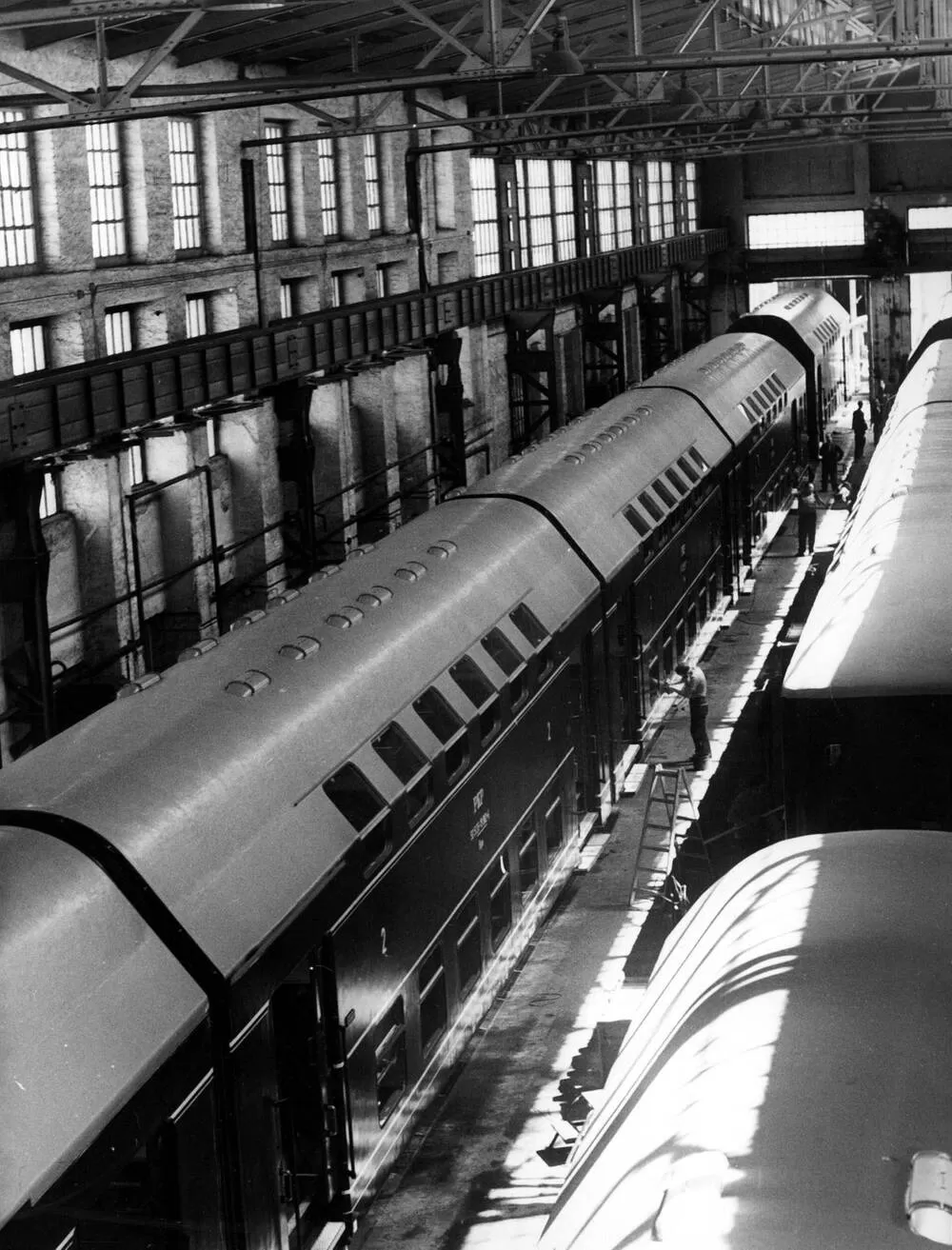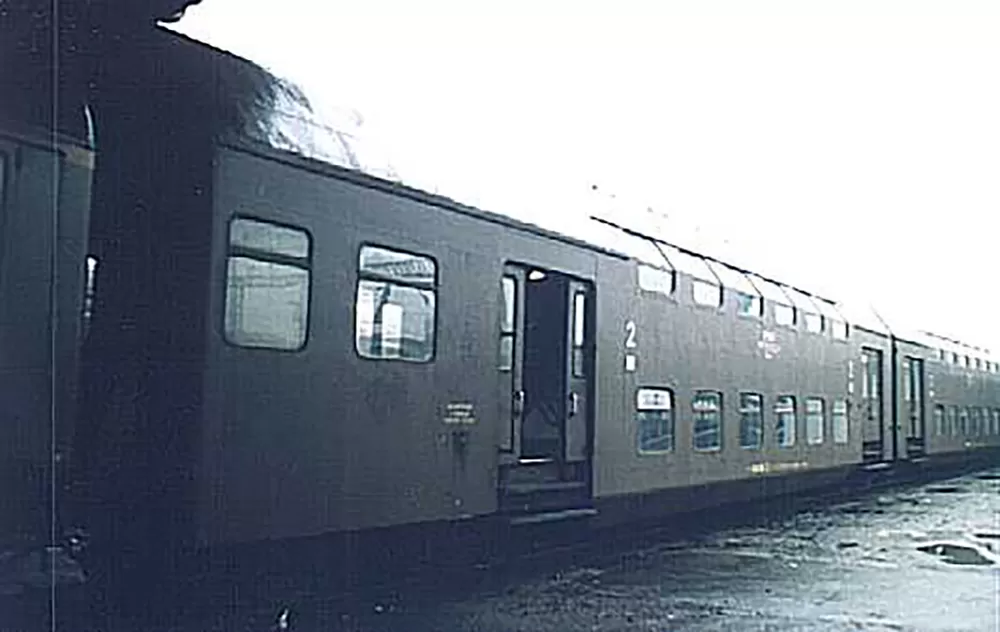Also known as:
UIC / EVN numbering:
50 51 26-1950 51 25-18Vehicle type:
Registration country:
Railway companies:
1955
Therefore, it was decided that the trains would be tested on the Poznań - Rawicz route (the first ride took place on 19 July 1955). The advantage of the route was that there were no bridges, numerous culverts and… tunnels on it. The disadvantage is that, apart from Leszno, there were actually no large groups of people on the route who would "test" the train for excessive passenger load.
In the fall of 1955, the train returned to the GDR with a fairly large number of Poles' requests to improve functionality, aesthetics, etc., in almost every detail. Beginning with the fact that wooden benches should be made with soft ones, door handles should be made of brass, lamp shades made of reflective, embossed glass etc. etc. so that it is not on the floor level, but indirectly between the lower and upper deck. In the conclusions, the Polish side criticized the steering car quite strongly, which in its opinion was too easily accessible to passengers, although the main reason for the liquidation of the steering car was the lack of locomotives with adequate air pressure, steam and, in addition, not only driving as so-called tractors, but also pushers. Germany took into account, inter alia, Polish applications and in 1957 they created a new wagon model, designated DGBe, in which the end and middle wagons were connected by short intermediate wagons (DGZ). There are entrances to the carriages on DGZ wagons. The entrance space increased and it was possible to place toilets under the stairs in each car, and not only in the final ones (this was also demanded by Poles).
1957
"Tours going to the XXVI MTP will be able to use during the Fair [then they lasted 2-3 weeks - editor's note author] from luxury double-decker coaches, which will be launched for the time being on the Warsaw - Poznań route. These will be second-class carriages with semi-soft seats. We can lend the wagons to the GDR. The Berlin - Poznań express will also be launched during the Fair. It will be a luxury motor train, which will be served to the border by the German crew, and in Poland - by Polish railwaymen.” In addition to the above information, it should be added that it was a VT.12.14 series train. Not very successful Hungarian construction, incl. due to poor driving characteristics. It was assumed that the train should reach a maximum of 125 km / h, in fact it could hardly reach 100 km / h, accelerated too slowly and was very loud. At a speed of 90 km / h, engine vibrations were felt throughout the train.
The fair is over, and the Polish tests of double-decker cars have ended. At the end of 1957, Polish railwaymen sent to Görlitz a dozen or so note binders, suggesting that it might actually be useful on Polish railways, but without a steering car and intermediate carriages, and the place left by the steering cabin should be used as a luggage compartment.
1958
1959
These units are delivered between 1959 and 1977 and are designated as Bipa.
The units are delivered in an olive colour with a large inscription "POLISH STATE RAILWAYS" ("POLSKIE KOLEJE PAŃSTWOWE") on each side of every section.
In total, 1949x single units are manufactured (473x four coaches convoys and 57x spare single carriages).
These units run as semi-fixed convoys of 4x coaches: 2x end coaches and 2x middle coaches. Between the coaches shared three axles bogies are used, with two bogies axles used for the end coaches at each extremity. Disconnecting the assembly is only possible in workshop conditions. As a result, it is not possible to freely extend and shorten the train set at stations, as well as to switch off a single unit in the event of damage - in this case, the entire unit must be repaired.
Sources: http://bazawagonow.pl/gorlitzpietr_zesp.html, https://www.rynek-kolejowy.pl/wiadomosci/ciche-kolejowe-rocznice-60-lat-pietrowych-wagon-bipa-94914.html, https://pl.wikipedia.org/wiki/Waggonbau_Görlitz
1990s
2004
2018
Do you have additional informations regarding this vehicle?
Help us writing the history of Bhp! Your knowledge is precious for us and the entire community, do not hesitate to share your facts, photos or videos:
Latest update on the 18th of October 2020 at 19:02
Contributor(s): Tudor C.
Discussion forum






